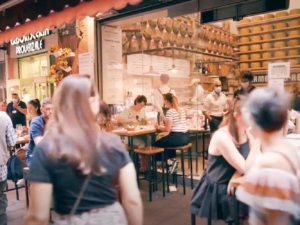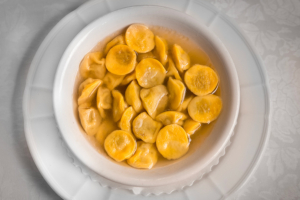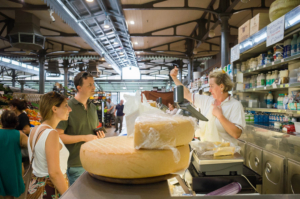Culatello: Italy’s finest cured meat explained
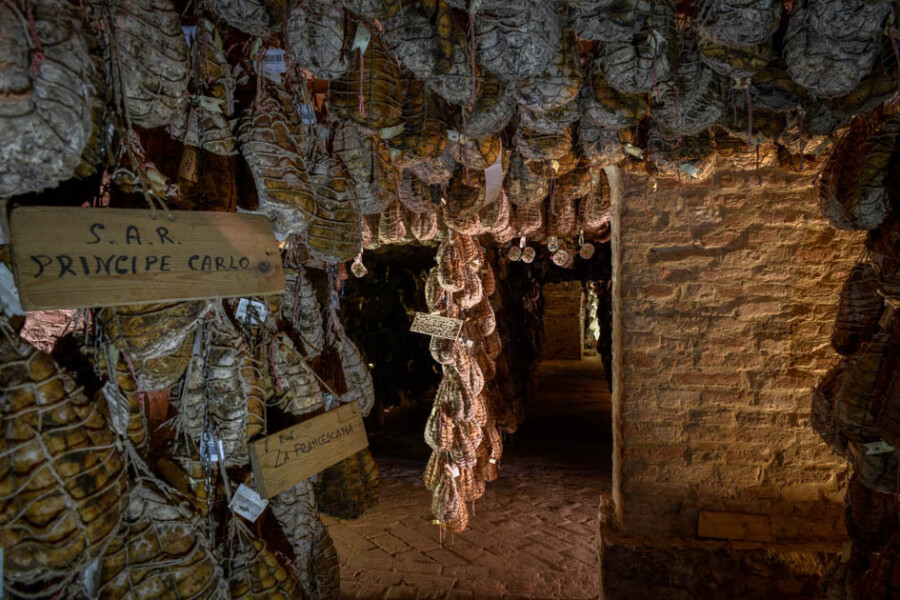
I'm sure you've already heard about Culatello. It's the Italian most renowned cured meat only produced only in a limited area near Parma.
But why all this hype?
What's the difference with Prosciutto?
This guide unlocks the secrets behind this gastronomic marvel, taking your taste buds on an unforgettable journey.
What is Culatello?
Culatello is one of Italy's most celebrated and sought-after salumi and one of the best foods from Parma.
Produced only in a limited area near the city of Parma, it is crafted exclusively from the rear muscle of the haunch of pigs that are born, raised, and butchered in Emilia Romagna.
This meticulous process, combined with its exceptional quality, contributes to its premium price.
Shaped like a large egg, each culatello weighs approximately 3kg.
The History of Culatello
You can trace the origins of Culatello back to 1735 or even earlier.
That year, a document from the Municipality of Parma mentioned its higher price compared to other pork products.
It was initially called investitura, as Culatello was considered too vulgar.
You can also find Investiture in a drawing by Giuseppe Maria Mitelli, an engraver from Bologna that you'd already know if you joined our Bologna Food Tour.
The drawing showcased a woman holding cured meat that looks quite like culatello. This cured meat was selected to represent the culinary excellence of Parma in the "Gioco della Cuccagna." This game is similar to a game of goose, where each region is represented by a distinct food symbol.
Throughout the 19th and 20th centuries, Culatello received praise from renowned figures like poet Giuseppe Callegari and writer Gabriele D'Annunzio.
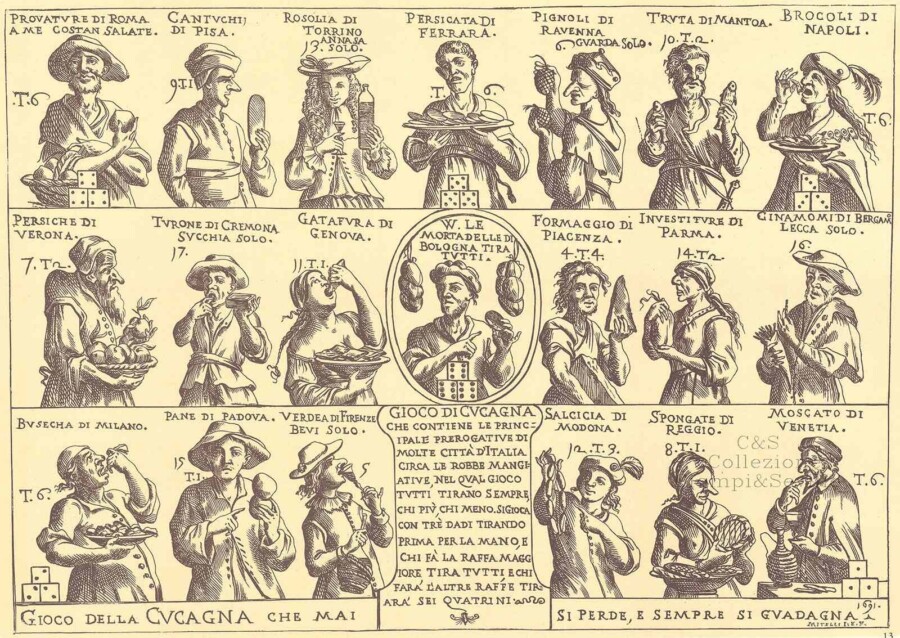
Giuseppe Maria Mitelli - Gioco della Cuccagna 1691
Where is Culatello made
Culatello di Zibello originates from a unique stretch of land in southern Parma, nestled along the banks of the Po River.
This region's climate is marked by long, cold, humid, and foggy winters, followed by hot, sultry, and oppressive summers.
Fog is considered just as important as salt, pepper, garlic, and wine. It's like an essential ingredient in the legend of Culatello.
Authentic Culatello di Zibello PDO is exclusively crafted in eight towns within Parma’s province: Zibello, Busseto, Polesine, Soragna, Roccabianca, San Secondo, Sissa, and Colorno.
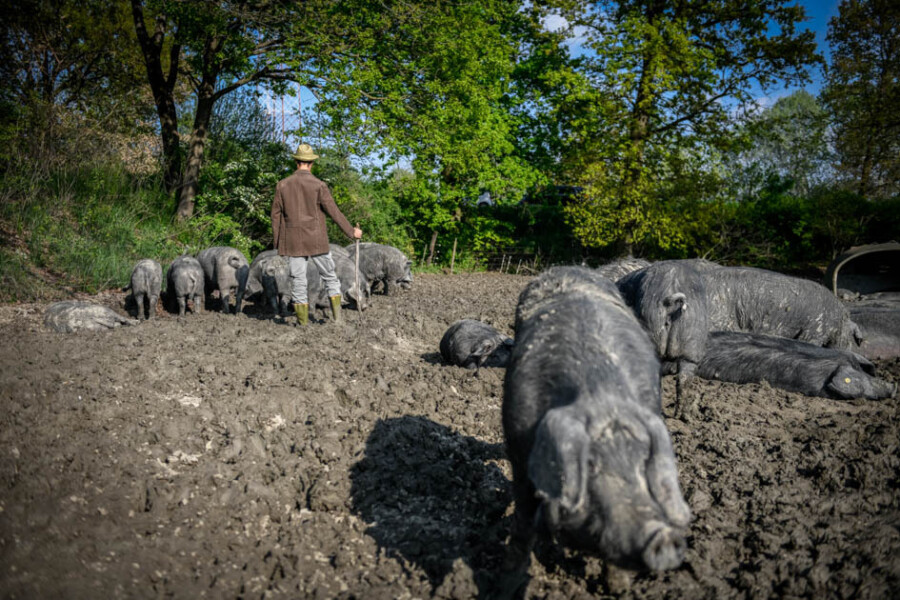
Black pigs from Parma
What's the difference between prosciutto and culatello?
To make culatello you start with the biggest muscle from the hind leg of the pig, without the bone or rind.
Unlike Prosciutto, which comes from the inner thigh, Culatello is all about that posterior muscle.
To get a Culatello, you've got to disassemble the thigh, separating it from the already refined Prosciutto.
How to taste culatello
To fully enjoy the incredible fragrance of the "King" of cured meats, you need to follow some special rules.
Here's how to taste culatello:
- Get your hands on some well-seasoned culatello. It's super hard, so be careful when handling and cutting it.
- Untie the strings that bind the culatello and give it a good brushing to clean it up.
- Tradition says you should wrap the culatello in a kitchen towel soaked in white wine or Fortana for a night (or longer if needed). Then let it rest in a cool place (around +5° to +15°).
- Once it's softened to the right degree, remove the skin and trim off the outermost fat. Slice it into thin pieces, preferably by hand. The direction and irregular thickness of the slices add to the taste, unlike a mechanical slicer. If you can't slice it by hand, it's best to use a manual slicer instead.
- To keep your culatello fresh, spread some olive oil and butter on the cut part, wrap it in a cloth (preferably linen) soaked in dry white wine, and store it in a cool place. Don't put it in the refrigerator, as it will dull the flavor.
What does culatello taste like?
It's sweet and more delicate than prosciutto, it's tender and it should melt in your mouth leaving a pleasant flavor.
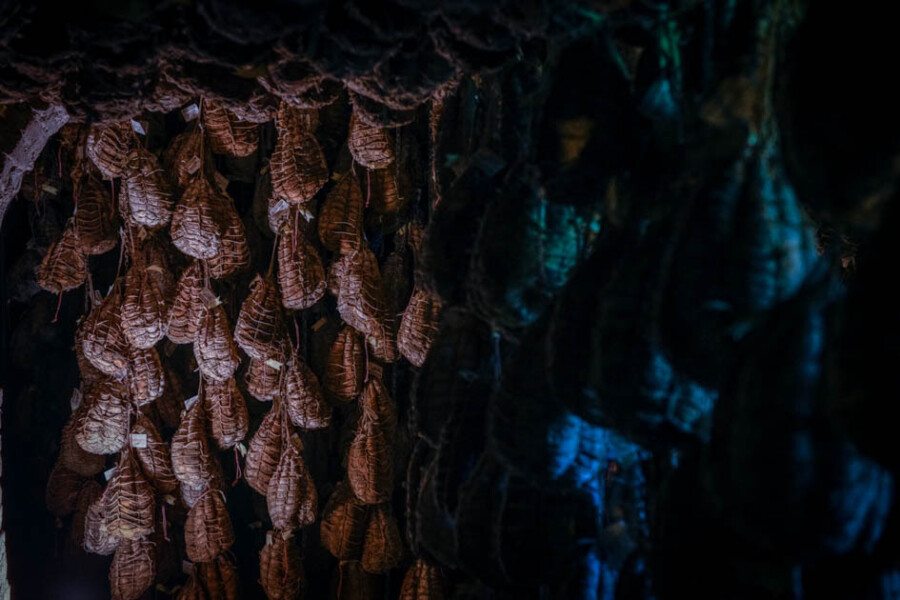
Culatello cellar at Antica Corte Pallavicina
How to eat culatello
The best way to eat culatello is to make it simple. A few slices with a good glass of lambrusco wine and bread or tagliatelle pasta with culatello cooked in butter for a few seconds.
Why is Culatello so expensive?
Compared to prosciutto, the process of making a culatello is much more labor-intensive, it takes more time and it follows strict regulations.
That's why culatello can cost up to 100€/kg, while prosciutto goes from 30€ to 60€/kg.
Old culatello, up to 36 months aging can cost even more than 150€/kg.
Where to eat Culatello
When it comes to indulging in the finest Italian delicacies, few experiences can rival the pleasures of savoring culatello.
If you find yourself yearning for an authentic culinary adventure, look no further than our Parma Food Tour.
Join us on a journey through the gastronomic wonders of Parma, where you can relish the exquisite taste of culatello in its birthplace.
From hidden local food shops to renowned gourmet establishments, we'll guide you to the most renowned eateries, ensuring an unforgettable culinary experience.
Don't miss out on this opportunity to tantalize your taste buds with the finest culatello in the world!
[photo credits: Museo del Culatello]
